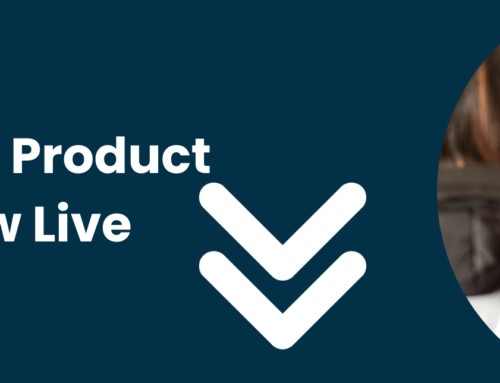PDG and Life Claims, 14 click applications & Aviva Price Discount
Hi everyone and welcome to this week’s protection update.
The Right Mortgage have recently joined the PDG. What is the PDG for those of you who haven’t heard of them? (Protection Distributors Group)
They are an industry body that has the sole aim of building trust within the protection industry.
Quoting from their site, they say “we see a future where empathy, honesty and transparency are the core drivers to insurers and intermediary care”.
The mission is “Helping families find the protection they need by encouraging insurers and intermediaries to deliver better consumer outcomes”.
Obviously, we’ve only just joined the group, but what have they achieved up to now?
Well, the PDG Claims Charter pledge set out a range of minimum level of support for claimants by insurers.
Then the PDG set up the Funeral Payment Pledge.
This had a simple purpose to help families pay funeral costs by way of an advance of the claim funds.
Both of these pledges were signed up to by various different providers (but not all) and if you want to take a closer look at both of these ‘pledges’ I’ve added a link to this protection update.
Click here to for the PDG Campaigns >>>
Something I wanted to raise was more to do with the fundamental mechanism of how life cover works.
It’s amazing to think that we’ve had Life Cover products for hundreds of years in this country, but for me, there’s always been a gap and I see it widening as we go forward into the future.
Life Cover – is it doing the job it’s supposed to?
In the UK each year, around 1.5 million life assurance policies are purchased each year by consumers. In fact, I can tell you it was 1,587,829 policies purchased during the calendar year of 2020. I will get the numbers for 2021 in the next few weeks.
What does life cover do?
It pays money when you die. A lump sum usually, but sometimes an income.
That’s an easy concept for anyone to understand. The trigger for the claim to be possible is the death of the life assured.
But who is the money from the policy intended for?
That’s a conversation to have with the life assured and policyholder. They will know and will be able to indicate who the money should go to.
So how do we make that happen?
Well, we need this extra thing called a Trust. That’s the best mechanism we’ve had up until now that turns the ownership of the policy over to someone else (the trustees). The trustees will make the claim. The life company will pay the money to the trustees. The trustees will then decide who to pay the money to.
Now they don’t have unlimited freedom to choose who to pay the money to.
In fact, they are bound by the list of potential or might be called discretionary beneficiaries who are listed on the trust form.
In the situation where it’s an unmarried partner who should receive the policy proceeds; that person isn’t ever listed on the trust form which means the Trustees don’t have the power to award payment to that person.
That means you would have to do something extra to allow for this to happen. The Settlor would need to name that person to the trustees in writing.
They can do it on the trust form or they can write a letter of wishes.
You hear me talk about a claim last week. What do people do with their policy documents?
They usually just put them in a drawer and then get on with the rest of their life. They know it’s there if they ever need it.
It feels like lots of things need to happen to create that simple outcome which is to make sure the right person gets the money.
Now of course we do have a variety of different online processes that are built into the application journey and these are actually improving each and every year.
But what about policies already in force? That’s mostly a paper journey with lots of signatures, witnesses and form completion.
I’m scratching my head about why we’ve made that whole thing so difficult?
Why can’t we have something which is part of the normal application which doesn’t involve other people and leave the responsibility to them to choose who to pay the money from the life policy to?
The world of trusts got polarised a few years ago, especially as far as life cover policies were concerned.
You’ve got 2 choices effectively. The first is a trust which is very rigid. You choose your beneficiaries and then they are locked in. You can’t ever change your mind about who will get the policy proceeds.
That’s called a bare/absolute trust and we don’t use them very often for protection; because of the lack of flexibility.
The flip side of that coin gives us the discretionary trust. A trust where there is flexibility, but the discretion belongs to the trustees you appoint. They use their discretion to choose who to pay the policy proceeds to, in what proportion and under what circumstances.
You need to choose people you trust, and it’s a good idea to tell them what you want them to do with the money and you should write this down.
Now anyone who knows me, knows I’m a massive fan of trusts. I’ve been talking about them with advisers for years and I’ve been constantly looking at ways we can understand the different trusts on the market and how to use them confidently and efficiently with clients.
But for me; I think the vast, vast majority of clients who buy their life cover without financial advice won’t write the policy into a trust. They just don’t know how to do it. The process isn’t simple and it’s different with every provider.
Trusts at point of sale are reasonably straightforward, but writing a policy into Trust which is already in force, is just less likely to happen.
Now I say all of that against the backdrop that actually; here at The Right Mortgage and Protection Network; we’re doing pretty well when it comes to writing policies into Trust.
But there is a wider issue that our industry needs to tackle.
I’ve written an article which went live in Cover Magazine this week called “Consumer Duty: Unmarried partners and life cover claims”
Click here to read “Consumer Duty: Unmarried partners and life cover claims” >>>
Take a look and let me know what you think?
British Friendly in 14 clicks?
British Friendly this week have overhauled and improved their income protection online journey based on adviser feedback.
What this has done is reduced the medical and lifestyle questionnaire part of the application form down to 14 clicks with just 9 compulsory questions.
At the same time, British Friendly have also increased the maximum annual pre tax earnings up to £100,000 which means they will offer more protection for higher earners.
Income Protection is that thing our whole industry strives to do better and we are moving in the right direction.
The innovation of products and simplifying the application journey really does mean there aren’t the barriers there perhaps once were with income protection.
We all understand what sick pay is. You can have work sick pay. Government sick pay.
This is personal sick pay. And clients will understand this. They will want it.
But income protection is something they can’t buy themselves. They need you. They need advice.
So take a look at what British Friendly have done with the application journey. They are an income protection specialist provider and they are particularly competitive for certain client types such as your manual workers and what you might call higher risk occupations.
Aviva – Protection Insight Podcast – Price Discount
I recently sat down with Stewart at Aviva and we talked about Price Discount.
This actually arose as a result following a conversation, I had with Jonathan Barnett from Mortgages2Go.
We discovered that there is a way of achieving a price discount for protection policies with Aviva.
Do you want to know more…?
Take a look at the Protection Insight Podcast – I’ve added it to this week’s protection update.
Click here for the latest protection insights podcast – Aviva Price Discount >>>
So that’s it from me once again.
Don’t forget to register for the NTE. That’s our big conference in Birmingham at the end of the month and it should be the biggest and best yet.
Have a great weekend everyone. See you soon.



